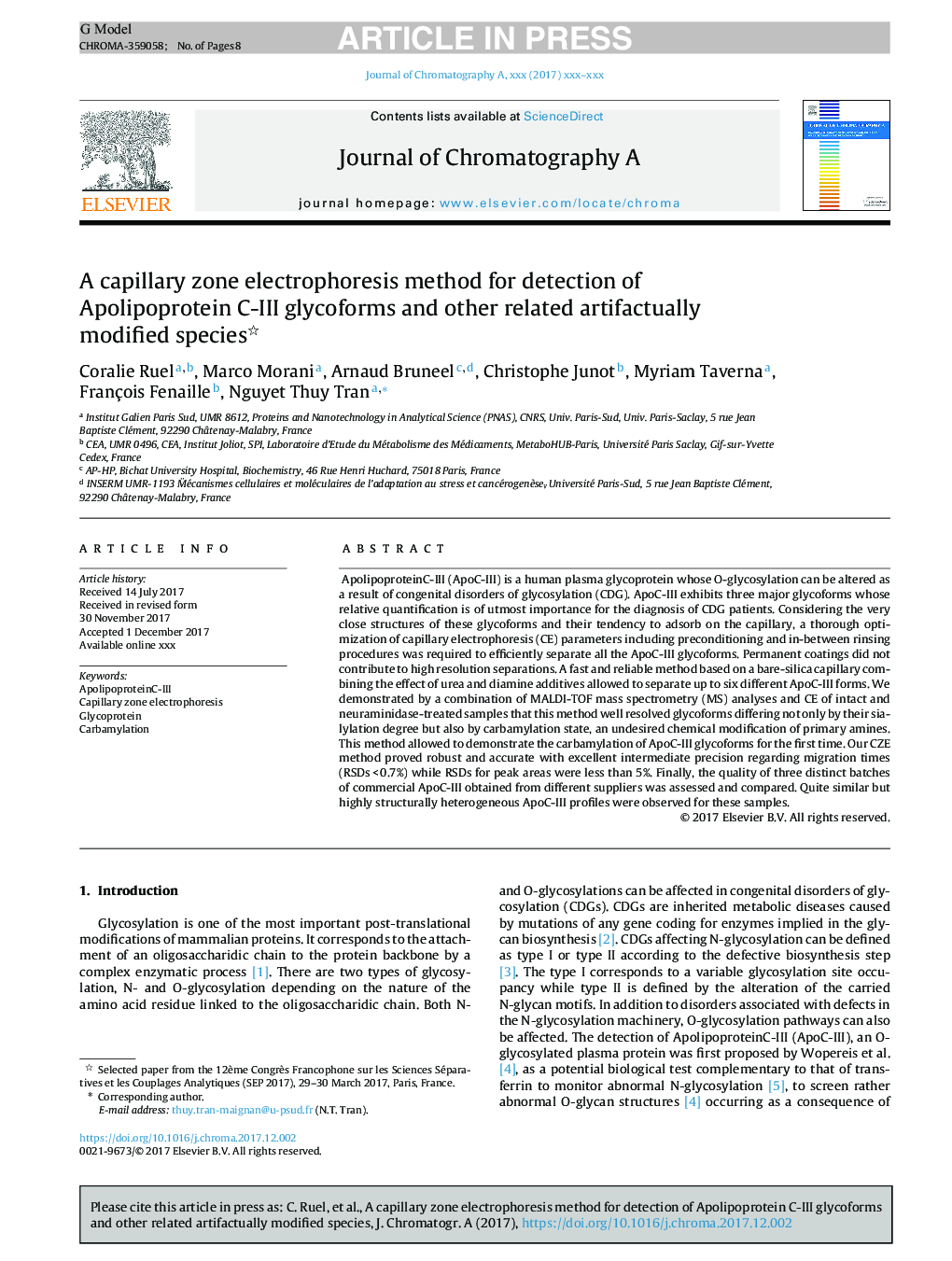| Article ID | Journal | Published Year | Pages | File Type |
|---|---|---|---|---|
| 7609273 | Journal of Chromatography A | 2018 | 8 Pages |
Abstract
ApolipoproteinC-III (ApoC-III) is a human plasma glycoprotein whose O-glycosylation can be altered as a result of congenital disorders of glycosylation (CDG). ApoC-III exhibits three major glycoforms whose relative quantification is of utmost importance for the diagnosis of CDG patients. Considering the very close structures of these glycoforms and their tendency to adsorb on the capillary, a thorough optimization of capillary electrophoresis (CE) parameters including preconditioning and in-between rinsing procedures was required to efficiently separate all the ApoC-III glycoforms. Permanent coatings did not contribute to high resolution separations. A fast and reliable method based on a bare-silica capillary combining the effect of urea and diamine additives allowed to separate up to six different ApoC-III forms. We demonstrated by a combination of MALDI-TOF mass spectrometry (MS) analyses and CE of intact and neuraminidase-treated samples that this method well resolved glycoforms differing not only by their sialylation degree but also by carbamylation state, an undesired chemical modification of primary amines. This method allowed to demonstrate the carbamylation of ApoC-III glycoforms for the first time. Our CZE method proved robust and accurate with excellent intermediate precision regarding migration times (RSDsâ<â0.7%) while RSDs for peak areas were less than 5%. Finally, the quality of three distinct batches of commercial ApoC-III obtained from different suppliers was assessed and compared. Quite similar but highly structurally heterogeneous ApoC-III profiles were observed for these samples.
Related Topics
Physical Sciences and Engineering
Chemistry
Analytical Chemistry
Authors
Coralie Ruel, Marco Morani, Arnaud Bruneel, Christophe Junot, Myriam Taverna, François Fenaille, Nguyet Thuy Tran,
